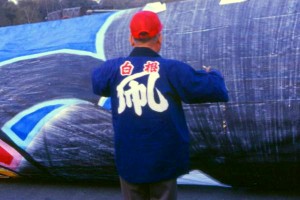 |
Can you roll up your kite without
taking the
frame out? Amazing how flexible bamboo can be. This
giant was transported as a whole in a Boeing.The transportation is done
under careful supervision of the senior kitemaster.
|
| |
|
|
The first
job on the field is to attach the bridle lines. Since there are
about 50 lines on this kite it is a lot of work, but with some
great teamwork the job is done fast and accurate.
|
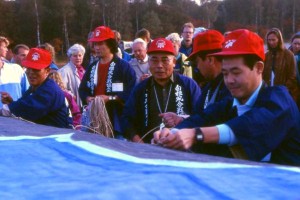 |
| |
|
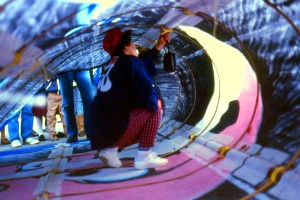 |
Sometimes it's quite handy that
the Japanese are small :-) A female helper pushes the bridle
lines back from inside the kite.
|
| |
|
|
When all lines are attached the
kite is laid flat on the ground. The length of the bridle lines is
constructed on the ground. Everything is measured
in steps, armlengths, and handspans.
|
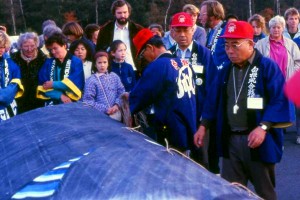 |
|
|
|

|
First a triangle is made
with the lines on the top corner and bottom corner, after which the
lines in between are measured. Then, row after row, the bridle
is completed, adding and distracting small lengths to compensate
for the dihedral of the kite
|
|
|
|
And I thought I made a mess
of my lines ;-)
The lines of natural fibres (hemp) are quite rough
on the outside, but the skilled fingers of
the japanese handle them with ease
|
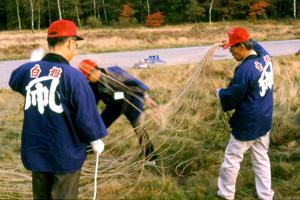 |
|
|
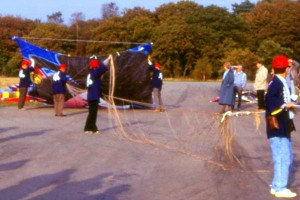 |
Finally the kite is ready for
launch. Mind you,
all the work is for one flight. The kite is
not
re-usable. Only the frame is saved, and
in some cases used for several generations by
the kitefliers
|
|
|
Airborne! Amazing how easy
the 30 kilograms of bamboo and washi paper soar on the light
wind. The spars get thinner from top
to
bottom, and there are no diagonal spars.
This makes the bottom corners of the kite very flexible, and
more sensitive to the wind. |
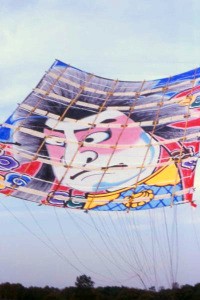 |
|
|
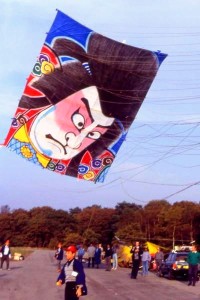 |
The long bridle lines have a
stabilizing effect, and distribute the
forces even over the kite. The o-dako has an incredible windrange
for a large, framed kite. I've seen it fly
at Scheveningen in windforce 6 Bft.
without any problems.
|
|
|
A gentle landing, completely
different from
the kitefights the kite is used for during the
annual kite festival in June. Standing on both
sides of the Nakanokuchi river the kites try
to hook into each other, after which the kites
often end up in the river. |
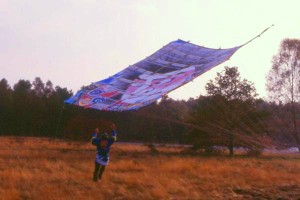 |